April Fool's jokes aren’t just for kids. In fact, many insects and other bugs play pranks on their prey and predators each and every day. However, these are more than just kid pranks or April Fool's ideas. These are ingenious methods and strategies deployed as a means of daily survival. And you may be surprised to know that these tricky bugs aren't exotic species. Many of these bugs could be found in your very own yard.
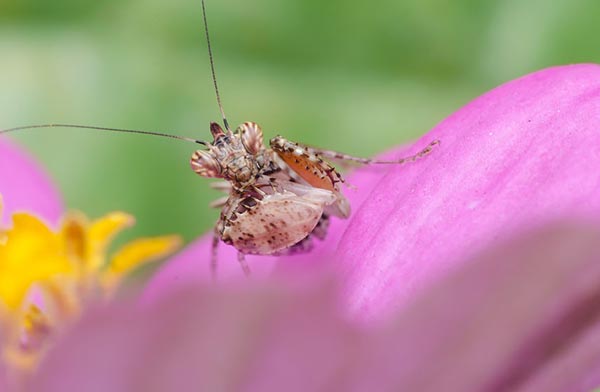
We've compiled seven insects with some of the most brilliant tactics for hiding, hunting and surviving.
How Insects Avoid Predators
Insects Dressing in Camouflage
In this prank, insects hide against a same-color background. They may be green or brown so they blend in with their environment, or they may change color slowly to adjust with changes in their background, like a chameleon. Who needs an invisibility cloak when you can use natural camouflage to disappear? Insects also use other tricks such as disrupting the outline of their body and avoiding sudden movements that might reveal their location.
Undercover Insects: The Masters of Disguise
This good, clean joke involves looking like another object, allowing the camouflaged insect to hide in plain sight. Stick insects such as the walking stick look like twigs or branches, while leaf insects such as the katydid resemble the leaves they eat. Many butterflies and moths have eyespots on their wings that imitate the face of an owl or another large predator. Those eye-spots can be revealed to startle a bird or other would-be predator, giving the insect a chance to escape.
Mimicry: Insects That Take Copy-Catting to a Whole New Level
In another ruse, insects mimic dangerous, bad-tasting or poisonous insects to fool their predators. The elephant hawk-moth caterpillar and viceroy butterfly are two of the pranksters who use this trick to dupe unsuspecting predators.
So which insects are the best con artists? Here are seven insects that use some form of camouflage, disguise or mimicry to fool their predators, on April 1 and every other day of the year.
1. The Walking Stick
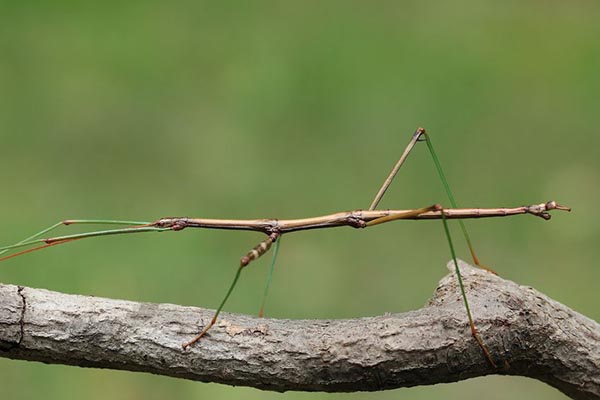
These camo specialists look like twigs or branches, allowing them to be invisible just by standing still. Walking sticks may walk slowly or sway to mimic a branch blowing in the wind. Stick insects are usually brown or green and range from a half-inch to two feet long. They freeze when they feel threatened. Stick insects aren’t always as harmless as they appear, though. The American stick insect sprays a mild acid to ward off predators. If the acid gets in your eyes, it can burn and even temporarily blind you.
2. The Katydid
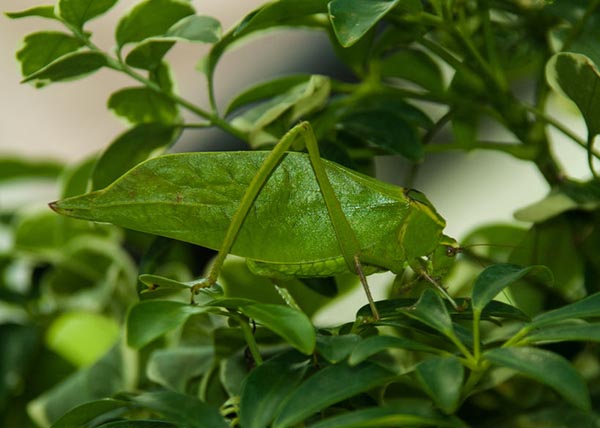
The wings of many katydids look like a flowering plant leaf, allowing these insects to hide in plain sight in the foliage they eat. They may also rock back and forth to imitate a leaf blowing in the wind. Their camouflage helps them evade predators, including birds, frogs, snakes, farmers and gardeners. Because of their excellent camouflage, you won’t usually see the cricket-like katydids, but you will hear them. Katydids rub their wings together, making the “katy-did” sound that gives them their name. When katydids are disturbed, they drop onto the ground and display their color-banded abdomen. This sudden defensive maneuver may startle a bird, giving the katydid time to get away.
3. The Moth
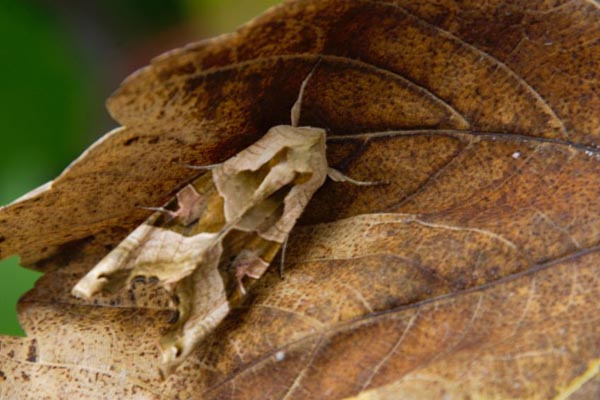
Moths are experts at insect camouflage. Their wing color and patterns match the tree bark or leaves where they hang out. The greenish-gray Eumorpha pandorus moth even appears to be wearing camouflage army fatigues. Research suggests that some moth species actively search for the best place to settle on a tree and the ideal body position to render themselves invisible.
4. The Grasshopper
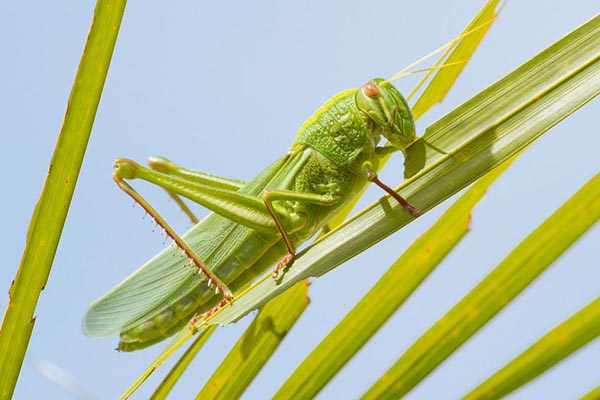
Grasshoppers are herbivores that feast voraciously on vegetation, sometimes destroying crops or gardens. Ground-dwelling grasshoppers are usually gray or brown so they blend into dried leaves or gravel. Foliage-dwelling grasshoppers are a shade of green that matches the leaves of their plant penthouse. Grasshoppers, as well as walking sticks, have a fracture line that allows a leg to break off easily if it winds up in a predator’s clutches. The lost leg doesn't grow back, but sustaining a minor disability is a small price to pay to survive.
Grasshoppers freeze and remain motionless when they see a predator. Some grasshoppers are boldly colored (red, yellow and black) to warn predators that they will release a noxious toxin if threatened. These poisonous grasshoppers raise their wings, flail their legs and hiss at birds, frogs, spiders and other would-be predators in an effort to tell them to back off.
5. The Flower Mantis
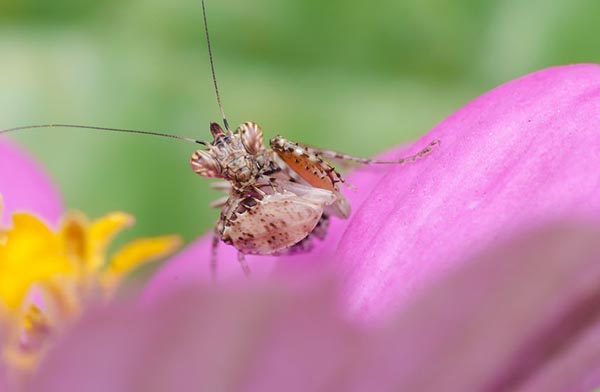
This bug is a praying mantis that mimics a flower to attract and then eat insects that approach the blossom seeking pollen. Researchers studying the Malaysian orchid mantis found the color of orchid mantises to be virtually identical to the color of many Malaysian flowers. They also found that the orchid mantises attracted more insects than the actual flowers did.
6. The Caterpillar
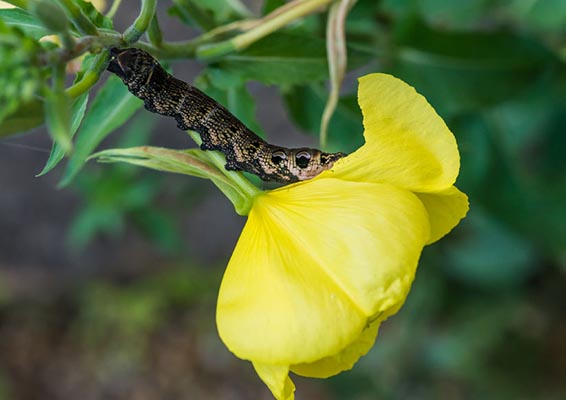
These insect larvae are masters of camouflage. Some young caterpillars mimic bird droppings on a leaf, while the older, bright green caterpillars hide among the leaves. The elephant hawk-moth caterpillar is grayish-green or brown, with two black eye-spots near its head. When threatened, the caterpillar swells up and shows the false eyespots, making it look like a snake. It also raises its head and moves from side to side. Now that’s a good prank.
7. The Viceroy Butterfly
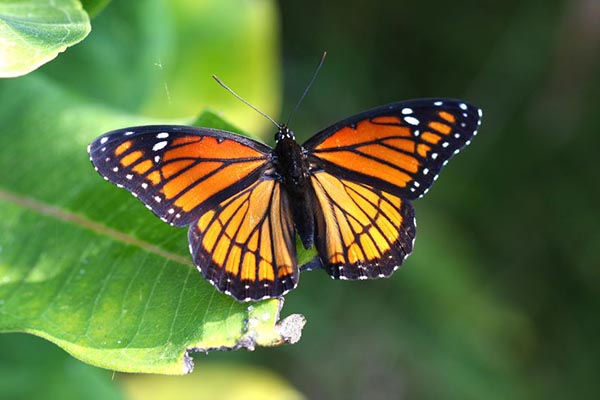
This butterfly copies the appearance of its model, the monarch butterfly, to discourage predators. The viceroy butterfly mimics the amber-colored wings of the monarch because the amber coloring warns predators that the butterfly carries a toxin. Animals that eat a monarch butterfly become ill, vomit and learn to avoid this or similar-looking butterflies. Both the viceroy and monarch butterflies carry toxins and taste offensive to predators. Therefore, any predator that makes the mistake of eating either species learns not to repeat their mistake.
It was originally believed that viceroy butterflies simply mimic the amber-colored wings of the monarch butterfly to help themselves survive. Monarchs carry a toxin that predators find repulsive, and animals trying to get a taste of a monarch become ill, vomit and learn to avoid this particular butterfly. The long-held convention was that the viceroy simply relied on its similar appearance to the monarch to survive. However, it has since been discovered that viceroy butterflies are actually toxic themselves. Through the complexities of nature, the viceroy and the monarch are actually mimicking each other to help their respective species survive.
If you or your kids are looking for an idea for funny April Fool's jokes, take a cue from the insect world and try out your best disguise.



